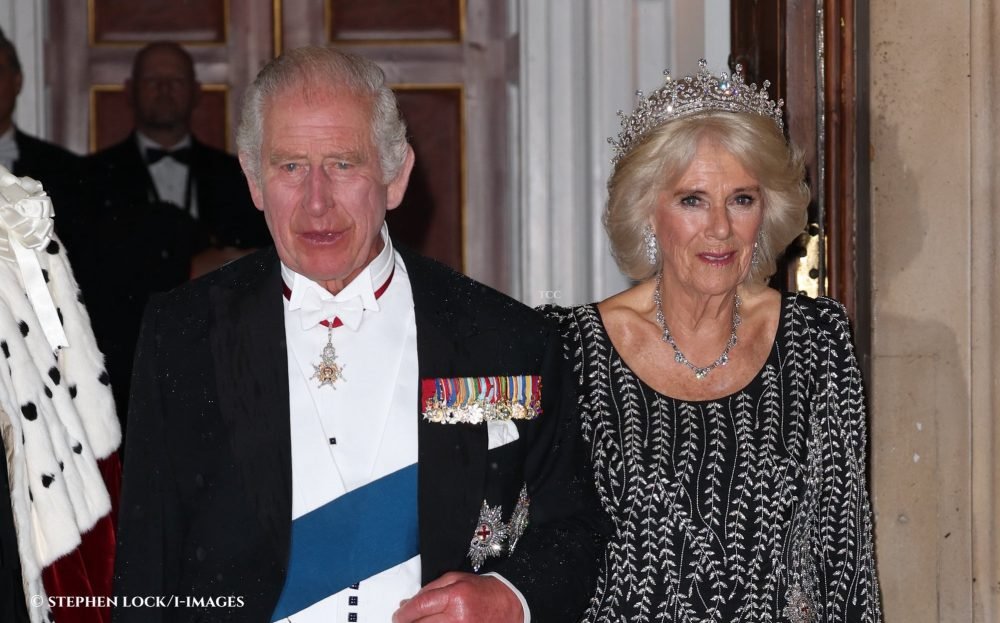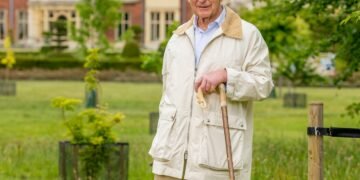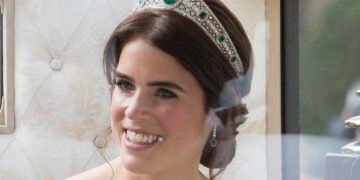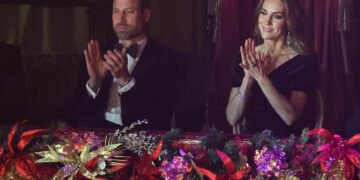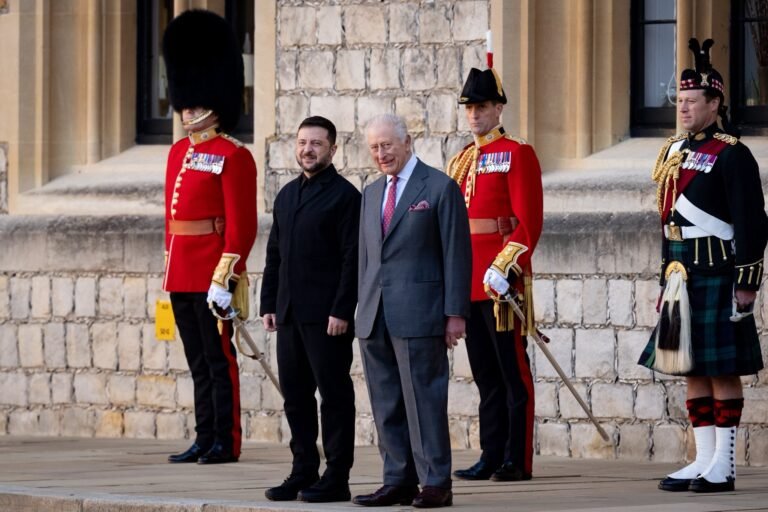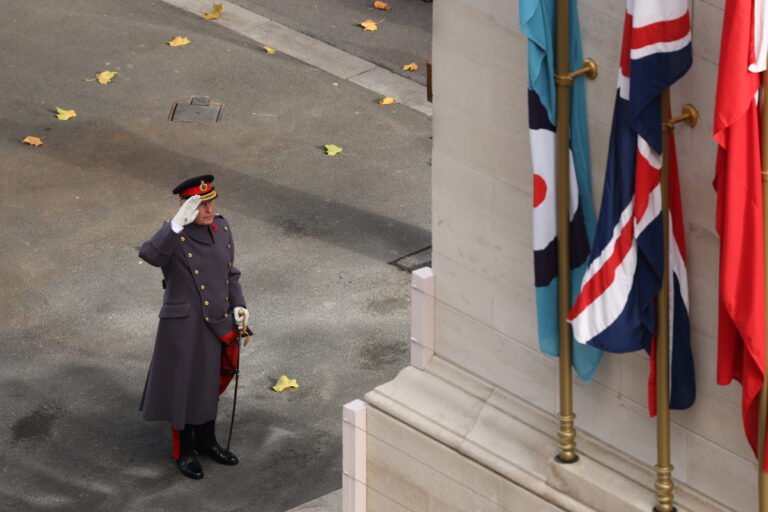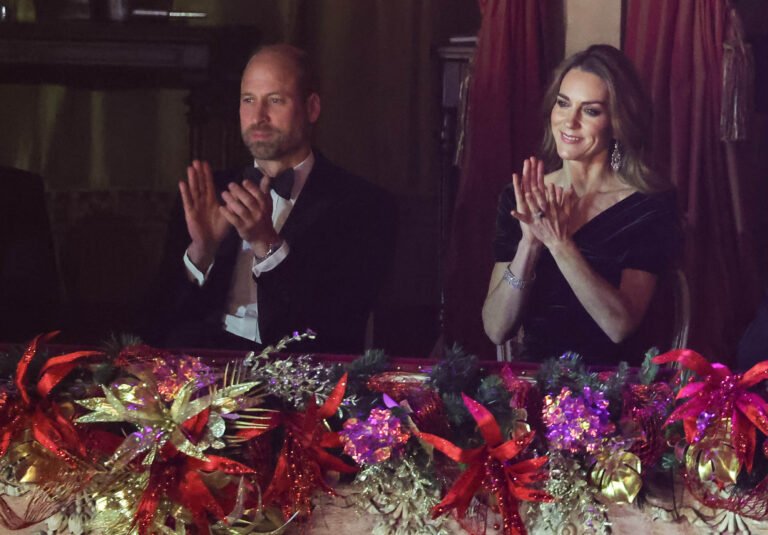This evening, The King and Queen attended a dinner at Mansion House to recognise the work of the City of London civic institutions and Livery Companies.
The visit marks The King’s continuation of upholding traditions – this specifically being visiting the City of London in his Coronation year.
At Mansion House, the home and office of the Lord Mayor of the City and London, Charles and Camilla viewed the anointing screen from their historic celebration earlier this year. The screen was gifted by the City of London Corporation and City Livery Companies and used during the anointing.
King Charles also took part in a ceremony, which traditionally takes place upon the first visit of a new Sovereign to the City of London – a tradition that began with in 1689 with William III.

Upon His Majesty’s arrival, The King was presented with The Pearl Sword – a silver gilt with a scabbard of red velvet on which are sewn over 2,600 pearls. The hilt shows the City of London arms, as well as the figure of Justice, blindfolded and bearing a set of scales. The Sword is thought to have first been presented to the City of London by Elizabeth I in 1571.
Charles then returned the Pearl Sword, confirming the Lord Mayor’s authority in the Square Mile when the Monarch is not present.
In the Egyptian Hall, The King gave a speech following The Lord Mayor’s Speech of Welcome. Charles told guests that he sees the UK as a ‘community of communities’, ‘an island nation in which our shared values are the force which holds us together, reminding us that there is far, far more that unites us than divides us’.
He urged society to face the ‘realities’ of climate change and urged individuals to draw on the ‘deep well of civility and tolerance, on which our political life and wider national conversation depend and allow the practice of all religious faiths. Such understanding, both at home and overseas, is never more vital than at times of international turmoil and heartbreaking loss of life’.
He added: ‘The instinct to cooperate wherever and whenever possible is deep within us. Even in the most fractious times – when disagreements are polished, paraded and asserted – there is in our land a kind of muscle-memory that it does not have to be like this; that the temptation to turn ourselves into a shouting or recriminatory society must be resisted, or at least heavily mitigated whenever possible, especially in the digital sphere where civilised debate too often gives way to rancour and acrimony.’
His words follow in the ongoing conflict in the Middle East, in which members of the Royal Family have spoken about the terrorist attacks by Hamas on Israel.
During his keynote speech, Charles made a joke at his own expense, referring incidents during the first days of his reign when he had a situation with fountain pens.
He said: ‘The British sense of humour is world-renowned. It is not what we do. It is who we are. Our ability to laugh at ourselves is one of our great national characteristics. Just as well, you may say, given some of the vicissitudes I have faced with frustratingly failing fountain pens this past year!’
For the occasion, Her Majesty wore the Girls of Great Britain and Ireland tiara (a favourite of Elizabeth II’s). It was made by Garrard in 1893.
Originally, the tiara featured 14 up-ended teardrop pearls in place of the brilliant diamonds at the top, giving extra height. The current brilliant diamonds were added in 1914 from another tiara in Queen Mary’s collection.
It came to be in royal hands via Queen Mary – then Duchess of York – in 1893; money was raised by Lady Eva Greville, one of Mary’s ladies-in-waiting, to purchase a tiara as a wedding gift. The Girls of Great Britain and Ireland tiara was given to Princess Elizabeth as a wedding gift from her grandmother in 1947. She reunited the tiara with its bandeau base in 1969, having worn it without for some time.
Camilla paired this with earrings and a necklace from one of her own sets, while Charles wore his Order of the Garter sash.

